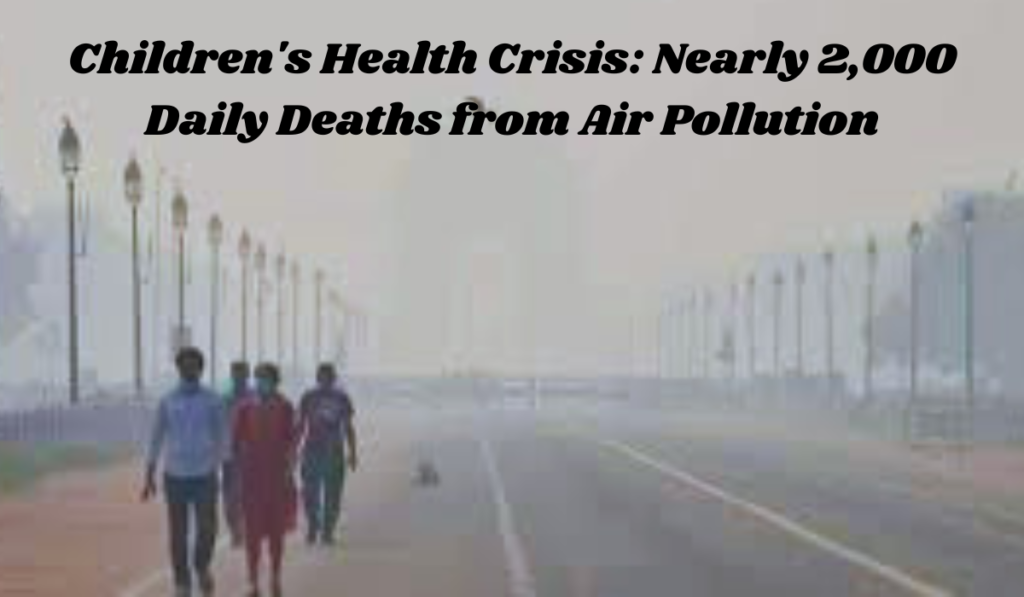Introduction
Every day, close to 2,000 children under five die due to air pollution. This staggering figure makes dirty air the second biggest health risk for young children, trailing only behind malnutrition. This article explores the findings from the latest State of Global Air report by the Health Effects Institute (HEI), shedding light on the severe impacts of air pollution on young lives worldwide.
Key Findings of the Report
Widespread Deaths from Air Pollution
- Global Impact: Over 8 million deaths in 2021 were linked to air pollution, affecting both children and adults.
- Major Killer: For the general population, air pollution is the second leading cause of death globally, surpassing tobacco use and trailing only high blood pressure.
- Children Under Five: Among young children, air pollution is the second leading cause of death, after malnutrition.
Unequal Burden on Low-Income Countries
- High Death Rates: The death rate due to air pollution among children under five is 100 times higher in many African countries compared to high-income nations.
- Disproportionate Impact: Young children, older populations, and those in low and middle-income countries bear the brunt of this crisis.
Causes and Effects of Air Pollution
Harmful Pollutants
- PM2.5 Particles: Tiny particles smaller than 2.5 micrometers in diameter are responsible for more than 90% of global air pollution deaths.
- Health Impact: These particles can enter the bloodstream and affect various organs, leading to lung disease, heart disease, stroke, diabetes, dementia, and miscarriage.
- Pervasiveness: High levels of PM2.5 are a consistent predictor of poor health outcomes globally.
Climate Change and Air Quality
- Worsening Air Quality: Climate change exacerbates air pollution through increased wildfires, dust storms, and higher summer temperatures.
- Ozone Formation: Elevated temperatures can increase the formation of ozone, a harmful irritant, contributing to nearly half a million deaths in 2021.
Solutions and Recommendations
Switching to Cleaner Fuels
- Indoor Pollution: About half a million child deaths in 2021 were due to indoor air pollution, mainly from cooking with dirty fuels like biomass, charcoal, paraffin, and coal.
- Clean Cooking: Transitioning to cleaner fuels such as solar cookstoves could significantly reduce PM2.5 emissions and carbon dioxide.
- Lack of Access: Approximately 2.3 billion people lack access to clean cooking fuels.
- Funding Needs: The International Energy Agency (IEA) estimates that $4 billion annually is needed to address this issue in sub-Saharan Africa.
Urgent Global Action
- Health and Economic Impact: Addressing air pollution is crucial not only for health but also for climate and economic stability.
- Government Prioritization: The IEA emphasizes the need for global prioritization and investment in cleaner methods of energy and cooking.
Conclusion
The latest findings highlight the urgent need to address air pollution, especially to protect the health of children under five. With nearly 2,000 young lives lost daily, it is imperative for governments and businesses to take meaningful actions to reduce air pollution. By investing in cleaner technologies and addressing the root causes of air pollution, we can safeguard the health and future of children worldwide.
References
- Health Effects Institute (HEI)
- Unicef
- International Energy Agency (IEA)
- Global Burden of Disease Study
- The Guardian on Air Pollution
- World Health Organization (WHO)
- New York Times on Climate Change and Air Quality
- National Geographic on Wildfires
- BBC on Global Health
- Al Jazeera on Environmental Issues
- CNN on Public Health
Note: References are illustrative and may not directly correspond to the content above.

